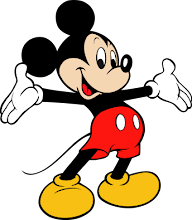Administration
From primary to higher education, are primarily funded and overseen by three governmental ministries.- Ministry of Education - For schools, pirivenas (Schools for Buddhist priests), Teachers Training Colleges and Colleges of Education.
- Department of Examinations - National examination service
- Ministry of Higher Education - For Universities and Technical Colleges.
- Ministry of Education Services - For supplying the physical facilities required for general education.
History
Education in Sri Lanka has a history of over 2300 year, it is believed that the Sanskrit language was brought to the island from North India as a result of the establishment of the Buddhism in the reign of King Devanampiya Tissa from the Buddhist monks sent by Emperor Asoka of India. Since then the an education system evolved based around the Buddhist temps and Pirivenas (monastic colleges), the later primarily intended for the education of clergy (even to this day) and higher education. Evidence of this system is found on the Mahawamsa and Dipavamsa, the Chronicle of Lanka that deals with the history of the island from the arrival of Prince Vijaya and his followers in the sixth century BC.With the out set of the colonial expansion in the island, first in the coastal provinces and then interior, Christian missionary societies become active in the field of education. The Church's monopoly of education in the island ended following the Colebrooke Commission set up by the British administration.
Schools
A standard system of schools were began by the British based on the recommendations of the Colebrooke Commission in 1836, this is regarded as the beginning of the modern schooling system in the island. It started with the establishment of the Royal College in Colombo (formally the Colombo Academy) and lead to the formation of several single sex schools constructed during the colonial period, by the British. Some of these schools were affiliated to the Anglican Church, these included S. Thomas' College in Mount Lavinia, Trinity College in Kandy.In 1938 the education system in Ceylon (now Sri Lanka) was made free following the granting of universal franchise in 1931. The late Hon. Dr.C.W.W. Kannangara took the initiative in establishing free education when he was the Minister of Education. Under this initiative the government established Madhya Maha Vidyalayas (MMV - Central Colleges) that were scattered around the island to provide education to all. The medium provided was either in Sinhala or Tamil.
In 1942 a special committee was appointed to observe the education system and among the suggestions that followed, the following still play an important role:
- i. Make available to all children a good education free of charge, so that education ceases to be a commodity purchasable only by the urban affluent.
- ii. Make national languages the media of instruction in place of English so that opportunities for higher education, lucrative employment open only to small number of the urban affluent, would become available to others as well.
- iii. Rationalize the school system so that educational provision is adequate, efficient and economical.
- iv. Ensure that every child is provided with instruction in the religion of his/her parents.
- v. Protect teachers from exploitation by managers of schools.
- vi. Make adequate provision for adult education.
During the colonial times, late national heroes like Anagarika Dharmapala together with foreigners like Colonel Henry Steel Olcott and Madame Blavatsky of the Buddhist Theosophical Society installed Buddhist schools to foster Sinhala students with an English education rich in Buddhist values and also in order to bring Buddhism to life, at a time, it was slowly fading away from the people. Most of these schools were established in the capitals of the major provinces of Sri Lanka. The first of these were Ananda College (formerly English Buddhist School), Colombo; Dharmaraja College (formerly Kandy Buddhist High School), Kandy; Maliyadeva College (formerly Kurunegala Buddhist Institution), Kurunegala; Kingswood College, Kandy; Mahinda College, Galle, Musaeus College, Colombo; which were followed years later by Visakha Vidyalaya (formerly Buddhist Girls College), Colombo; Nalanda College, Colombo; Mahamaya Vidyalaya, Kandy. Sri Lanka also has many catholic schools such as St. Joseph's College, St Peter's College, St Bridget's Convent, St. Benedict's College, in Colombo and St Anthony's College in Kandy.
Many schools were built in the post colonial era. However, the established schools who had their origins in the colonial era dominate social life in Sri Lanka mainly due the network of old boys and old girls. D. S. Senanayake College is a notable exception. This is among the few schools that have gained prestige within a very short span of 42 years of its existence.

